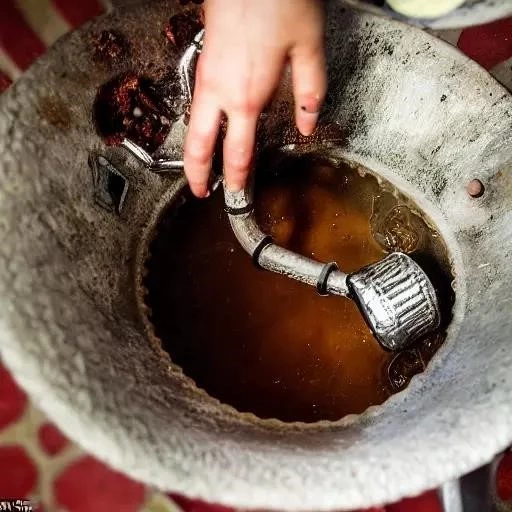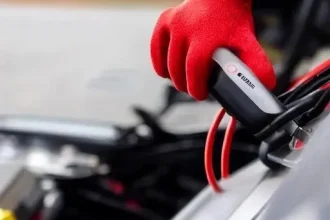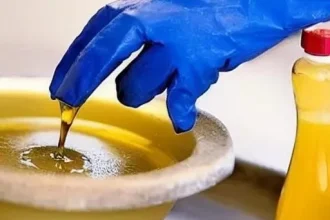The heart of every home, the kitchen, often yearns for an update. Amidst gleaming countertops and freshly painted cabinets, an aging or inefficient kitchen sink can feel like a discordant note in an otherwise harmonious symphony. Embarking on a kitchen renovation, particularly replacing a central fixture like the sink, might initially seem like an overwhelmingly daunting task, reserved solely for seasoned professionals. However, a growing movement of empowered homeowners is discovering the immense satisfaction and significant savings that come with tackling such projects themselves. Far from being an insurmountable challenge, installing a new kitchen sink is remarkably achievable, transforming not just your culinary space but also your self-reliance and practical skills.
Today’s DIY landscape, rich with accessible resources and standardized components, has dramatically lowered the barrier to entry for home improvement enthusiasts. The adage “if a plumber can do it, you can do it” rings truer than ever, echoing through online tutorials and community forums. This isn’t about cutting corners; it’s about embracing a methodical, informed approach to a common household upgrade. By meticulously planning, gathering the right tools, and understanding the core principles of plumbing, you can confidently navigate the installation process, culminating in a beautiful, functional new kitchen centerpiece that you installed with your own hands. The journey, while requiring attention to detail, promises a deeply rewarding outcome, imbuing your kitchen with a personal touch and saving considerable costs on labor.
| Essential Item | Description/Purpose | Pro Tip for Success |
|---|---|---|
| New Kitchen Sink | The centerpiece of your project. Available in various materials (stainless steel, fireclay, composite) and mounting styles (drop-in, undermount, farmhouse). | Measure your existing cutout precisely and consider the depth for drain line compatibility. Buying it yourself saves on plumber’s mark-ups. |
| Supply Lines | Connects the faucet to your hot and cold water valves. Typically 3/8″ to 1/2″ or 1/2″ to 1/2″. | Invest in stainless steel woven supply lines; they are incredibly durable, less prone to kinking or leaks than older copper or PEX. Replace old ones! |
| Drain Assembly & P-Trap | Channels wastewater away from the sink. Includes strainers, gaskets, and the curved P-trap to prevent sewer gases. | For a 90-92mm sink hole, use a 3″ diameter trap. Dry-fit all PVC components before sealing to ensure perfect alignment and prevent leaks. |
| Plumber’s Putty & Silicone Caulk | Plumber’s putty creates a watertight seal under drain flanges; silicone caulk seals the sink rim to the countertop and the faucet to the sink. | Apply a smooth, even bead of silicone for a professional finish and long-lasting water protection. Allow it to cure fully before exposing to water. |
| Jigsaw & Drill | For cutting the countertop opening (if needed) and drilling pilot holes. | Always measure twice, cut once! Use appropriate blades for your countertop material. Safety glasses are non-negotiable. |
| Adjustable Wrenches & Screwdrivers | For tightening fittings, securing clips, and assembling faucet components. | A basin wrench is invaluable for reaching tight spots under the sink. Keep a bucket handy for any residual water. |
| Safety Gear | Gloves, safety glasses, and potentially a dust mask. | Prioritizing safety protects you from injury and ensures a smooth project completion. |
| Official Reference | Detailed installation guides and product specifications. | Home Depot Sink Installation Guide |
The journey begins not with a wrench, but with meticulous preparation. Before even thinking about disconnecting the old sink, thoroughly assess your current setup. Measure your existing sink’s dimensions and compare them to your desired new model. While plumbing fixtures themselves are largely standardized, sink depths can vary significantly, potentially complicating drain line connections. This crucial initial step prevents frustrating, time-consuming trips back to the hardware store. Moreover, consider assembling as much of your new sink and faucet components as possible before positioning the sink into its new home. Attaching the faucet, soap dispenser, and drain flanges while the sink is uninstalled is a game-changer, saving you from awkward contortions under the cabinet later.
One of the most universally acclaimed pieces of advice from seasoned DIYers is to leverage the power of online video tutorials. Platforms like YouTube are treasure troves of practical demonstrations, offering visual guidance that can clarify even the most intricate steps. These short, focused videos often reveal invaluable tips and tricks—like the best way to wedge a wrench for detaching a stubborn garbage disposal or the optimal order for connecting fittings—potentially saving you hours of frustration. Speaking of disposals, many experts now advocate for a simple wire mesh screen to catch debris, citing it as a more efficient and less maintenance-intensive solution than a traditional disposal unit. This forward-looking perspective highlights a shift towards simpler, more sustainable kitchen solutions.
When it comes to the actual plumbing, the fear of leaks often paralyses novice installers. However, modern components and proper techniques make this concern largely manageable. Replacing old supply lines with robust, stainless steel woven lines (often coated in clear rubberized plastic for added protection) is a non-negotiable upgrade, vastly superior to prone-to-kink copper tubing or early-generation PEX. For the drains, fresh gaskets and a generous application of plumber’s putty are your best friends, creating airtight seals that withstand the test of time. While drain lines aren’t under pressure, ensuring they are securely connected and free from wobbles is paramount for preventing future headaches. Should you encounter older, stiff ball valves, seize the opportunity to replace them; new ones ensure reliable shut-off capability, making future DIY projects infinitely easier.
Finally, the finishing touches elevate a functional installation to a professional-grade masterpiece. A smooth, even application of silicone caulk around the sink’s rim and where the faucet meets the sink is incredibly effective in preventing water seepage into your counter, safeguarding against rot and maintaining the integrity of your cabinetry. This seemingly minor detail is, in fact, a critical barrier against long-term damage, preserving all your hard work. Remember, patience and a commitment to quality are your greatest assets. By embracing the challenge, carefully following instructions, and not shying away from seeking visual guidance, you’re not just installing a sink; you’re investing in your home’s future and honing invaluable skills that will serve you well for years to come. The gleaming new sink, a testament to your capability, awaits!






